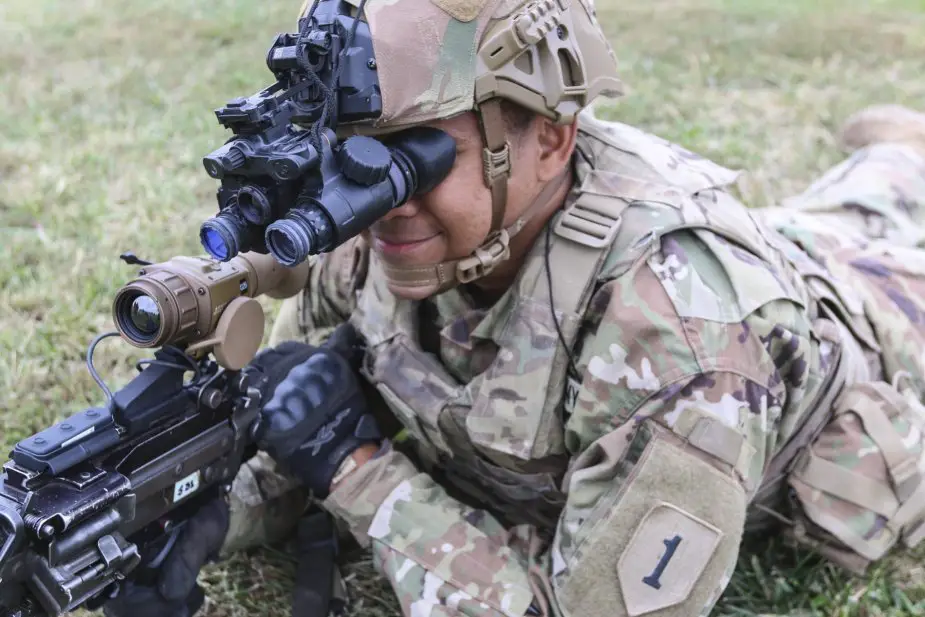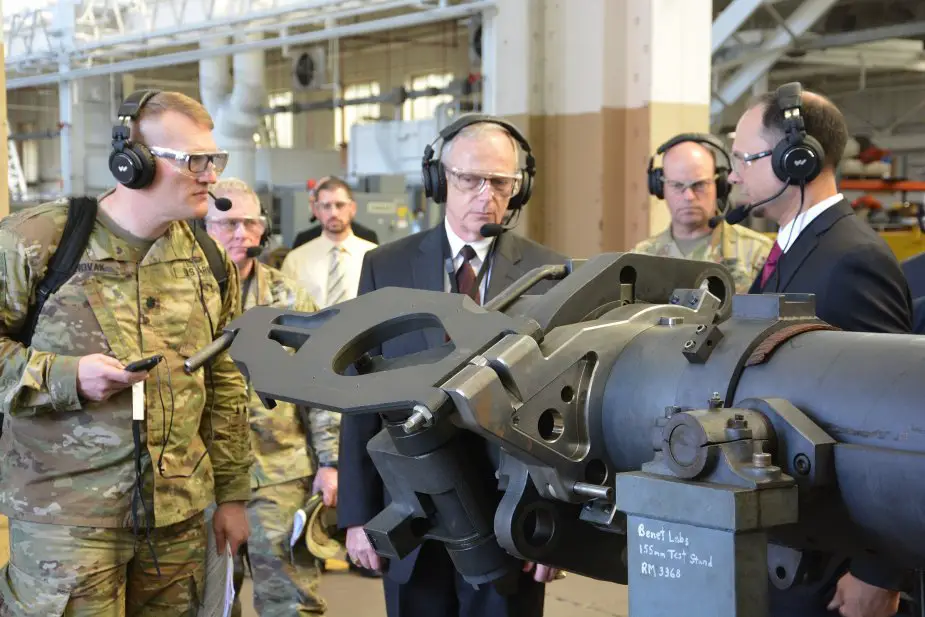U.S. soldier-centered approach helping lead ground modernization efforts
Nearly two years into its largest modernization overhaul in four decades, the U.S. Army looks to continue its momentum of developing new ground systems centered on input from soldiers. Sean Kimmons, Army News Service, reports.

Soldiers from the 1st Infantry Division were the first to receive the Enhanced Night Vision Goggle-Binocular in September 2019 (Picture size: Sgt. 1st Class Chris Bridson)
Testifying before the House Armed Services Committee's tactical air and land forces subcommittee, the Army's acquisition chief told lawmakers Thursday that adequate funding is needed to build on those efforts. "The Army's modernization program takes time and money," said Bruce Jette, assistant secretary of the Army for acquisition, logistics and technology. "We are working to achieve efficiency wherever possible and we need sufficient, predictable, sustained and timely funding to ensure a successful outcome."
Realigning funds
In its fiscal year 2021 budget request, the Army has realigned $9 billion to fund its six modernization priorities over the next five fiscal years. In total, there is now $63 billion over that period aligned against those priorities: long-range precision fires, next-generation combat vehicle, future vertical lift, the network, air and missile defense, and Soldier lethality. The realigned funds come after senior leaders carried out extensive "night court" sessions that led to the elimination or reduction of 80 programs across the Army.
In the latest budget request, the top program being canceled is about $122 million for the Advanced Precision Kill Weapon System, a guidance kit for helicopter-launched rockets. The largest program reduction is $222 million for upgrades to Bradley Fighting Vehicles.
The Army intends to replace the Bradley with the Optionally Manned Fighting Vehicle. In January, the Army halted its solicitation for a rapid prototype and now plans to solicit it again to gain more interest from industry. "We've made it clear OMFV is continuing," Jette told lawmakers. "The objective we were pursuing is unchanged. It's the methodology by which we're trying to get there." Jette also thanked Congress for granting the Army new authorities to strengthen its acquisition process.
As a result of the middle-tier acquisition authority, the Army has been able to rapidly prototype and accelerate select modernization efforts. Currently, there are 11 rapid prototyping efforts and one rapid fielding effort, he said. In addition, the other transaction authority, or OTA, has allowed the Army to attract small companies and nontraditional businesses. In fiscal 2019, the Army awarded 830 agreements valued at roughly $5 billion, he said.
Jette also credited the unique relationship between his office and Army Futures Command for bringing system concepts and designs to life. "Together they are aligning requirements, development and acquisition expertise with representatives from testing, logistics, science and technology, and other important Army communities," he said.
The collaboration has quickly delivered equipment to soldiers, such as the Enhanced Night Vision Goggle-Binocular and the Command Post Computing Environment, a software system that supports mission command. "And, in both cases, statement of need to delivering those capabilities was less than 18 months," Gen. John Murray, the AFC commander, said during the hearing.
The general also noted successful test shots of the Precision Strike Missile and the Extended-Range Cannon Artillery, which both aim to greatly extend the range of two key long-range precision fire delivery systems.
Soldier-centered approach
The Army has also relied on soldiers to play a larger role in developing new equipment. "In all of our efforts we are leveraging a Soldier-centered design approach to delivering capability, putting soldiers at the center of our production," Murray said. Before, soldiers typically did not see a new piece of equipment until a limited user test. "And it usually didn't fare well because we didn't have Soldiers involved from the front," he said. "So that has become a standard principle for everything."
Soldiers, he said, have been heavily involved with the next-generation squad weapon, as companies vie to replace the M4 carbine and M249 squad automatic weapon.
The Integrated Visual Augmentation System, or IVAS, has been another success of soldier feedback. Murray said there has already been over 6,000 hours of soldier touchpoints that have helped engineers make modifications to the system. "Within this approach, we are committed to learning early and learning often," he said. "This means focusing on characteristics and working with industry and our Soldiers to make sure that when we do write requirements, we get them right the first time."

Bruce Jette, center, the Army's acquisition chief, receives a briefing at Army Benet Laboratories in Watervliet Arsenal, N.Y., May 8, 2018. Jette told lawmakers during a hearing March 5, 2020, that the Army requires sufficient, predictable, sustained and timely funding to build on the momentum of its modernization efforts (Picture source: John B. Snyder)


























